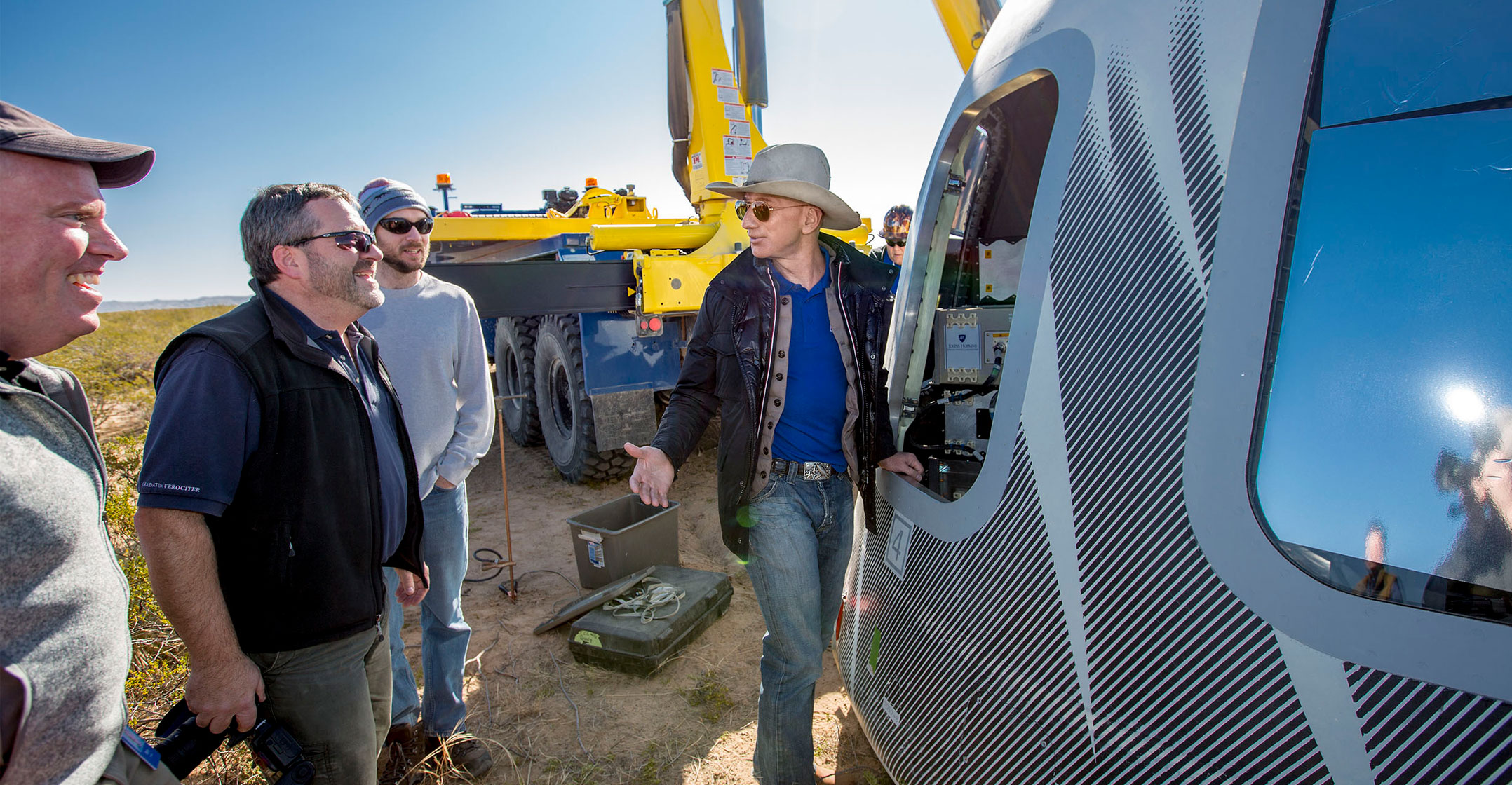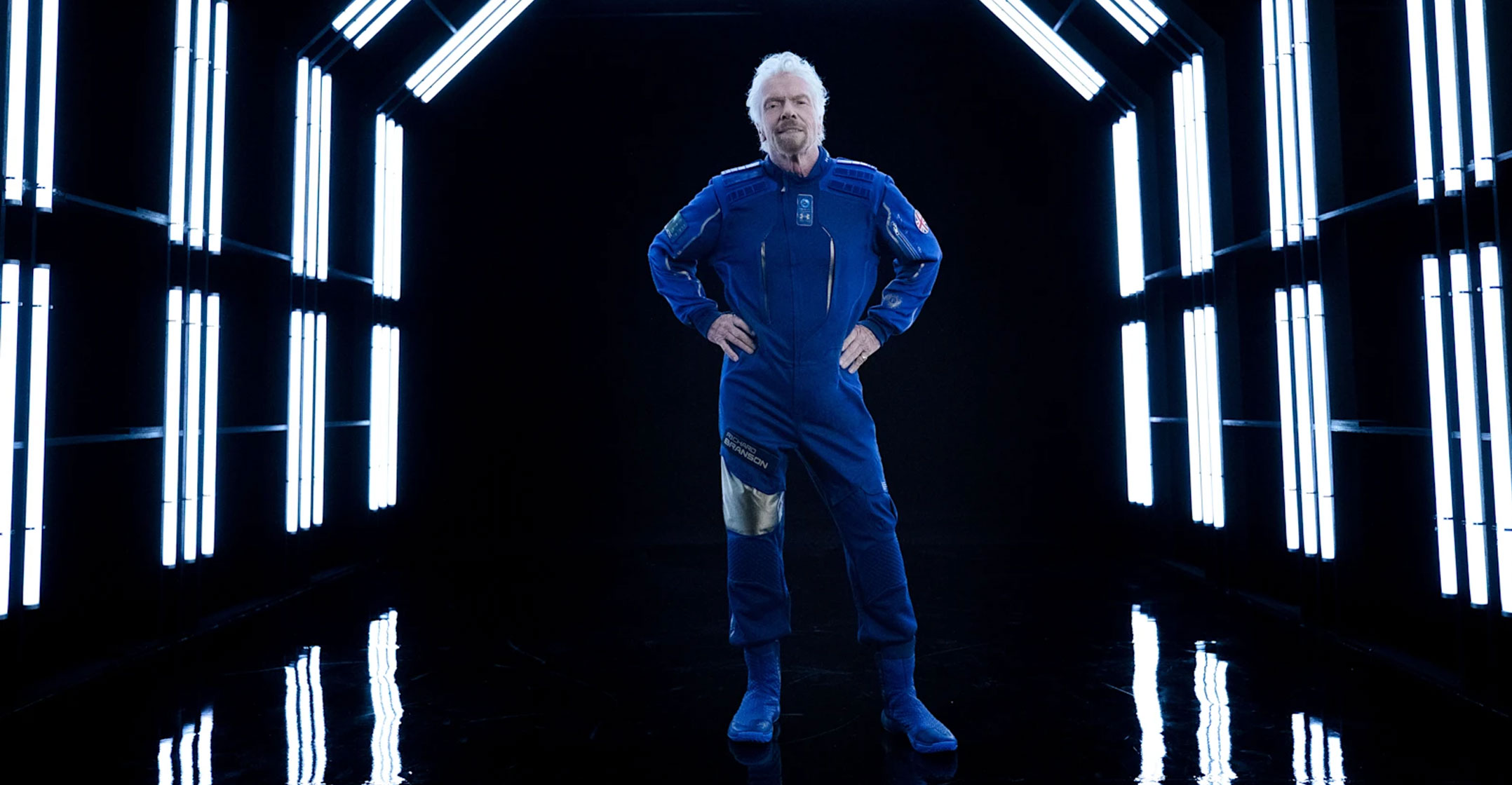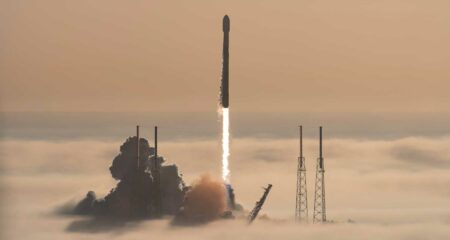
The billionaires who blasted into space in recent weeks did so with style. Blue Origin’s Jeff Bezos sported a cowboy hat after landing and Richard Branson wore a blue Virgin Galactic jumpsuit he’d called “sexy”.
To some of the world’s leading experts in space-travel safety, something else stood out: Neither company equipped the passengers of their spacecraft with pressure suits to protect them from a rapid decompression outside Earth’s atmosphere.
Such suits are required by Nasa and other nations as a result of hard-earned lessons from fatal accidents, but no such standards apply to the companies racing to commercialise space, including tourist flights. The US congress has exempted such ventures in the US from any federal safety oversight for crews.
“The reality is when you go to space, you don’t dress with nice stuff, you dress with the right stuff,” said Tommaso Sgobba, a former European Space Agency official who is executive director of the International Association for the Advancement of Space Safety.
The success of two privately funded human-space launches last month has supercharged the US commercial launch industry, and advocates say the lack of rules is a key component to the rapid pace of innovation and should be extended.
Early days
The industry “is in its early days, and more time is needed to have informed discussions on what regulatory framework should look like in the future to support human spaceflight”, Mike Moses, president of space missions and safety at Virgin Galactic, told lawmakers at a hearing earlier this year.
But Sgobba and others say it’s time to end the restriction on government oversight of an enterprise that is notoriously risky. Rockets are akin to giant bombs that have proved difficult to harness with high reliability, and the harsh environment of space leaves little margin for error.
There have been 379 human flights to space by the US since the early 1960s, four of which ended in fatal accidents, according to George Nield, an industry consultant who directed the Federal Aviation Administration’s office overseeing commercial launches for 10 years until 2018. That means there was about a 1% chance of failure.

The FAA scrutinises launch applications to ensure a mishap won’t harm the public on the ground or in passing aircraft. As part of that, it reviews the reliability of rockets and spacecraft, but congress has forbidden the agency from establishing any rules to protect occupants.
Virgin and Blue Origin didn’t respond to requests for comment. The moratorium on safety oversight, which began in 2004 and was spurred by millions of dollars in lobbying, extends at least through to 2023.
Sgobba, Nield and others say the moratorium has outlived its usefulness. What’s more, they fear a catastrophe on one the flights could cripple the burgeoning industry for years. “It is time, I believe, to update our human spaceflight regulatory framework,” Nield said.
Sgobba, Nield and several other leading government and private-industry officials authored a proposal two years ago calling for creation of a quasi-government institute to set minimum standards based on the lessons learned during decades of space travel.
Lawmakers haven’t hesitated to extend the moratorium on safety in the past and the industry has powerful allies in congress, but some are calling for change. “With space tourism taking off, I believe we should no longer tie the hands of the agency responsible for safety oversight,” said representative Peter DeFazio, a Democrat who is chairman of the house transportation and infrastructure committee.
‘Learning period’
Commercial space companies are adamant that what they call a “learning period” has been critical to rapid expansion and should be extended. Companies follow extensive safety measures and imposing rules would be too restrictive and hinder innovation, they say.
“If all vehicles are meant to be regulated the same way, that basically limits the design features of those vehicles,” said Karina Drees, president of the Commercial Spaceflight Federation. The group’s members include Blue Origin, Virgin Galactic and dozens of other companies.
The companies have begun to develop their own minimum voluntary standards, the federation said. The companies and the trade group that represents them have spent US$9.8-million on lobbying since 2011, according to the OpenSecrets website.
Blue Origin on its 20 July flight carried an 18-year-old Dutch man whose father paid an undisclosed sum to the company at an auction and Virgin Galactic has announced it had boosted prices for its brief forays to the fringes of space to $450 000. Elon Musk’s SpaceX is planning its own commercial ventures carrying people.
For decades, only Nasa and the military oversaw space launches. The US government created an office to review commercial operations in 1984, first under the department of transportation and later with the Federal Aviation Administration.
The FAA has published “recommended practices” that companies can follow for safety measures. The agency also requires that all participants sign a waiver before flying saying they understand the spacecraft’s risks and that it isn’t certified by the government.
The commercial launch industry has grown exponentially in recent years. In May, the FAA oversaw the 400th launch. After only one in 2011, there were a record 39 in 2020 and the agency is on pace to shatter that record this year with 37 already.
The vast majority have been used to expand satellite networks and carry other goods into space, and those create minimal risks to humans. But commercial flights carrying people are poised for a leap.
SpaceX, too
In addition to Blue Origin and Virgin Galactic, SpaceX’s Dragon capsule has carried Nasa astronauts to the space station and the company has sold seats to billionaire Jared Isaacman for a launch as soon as 15 September. Axiom Space of Texas has contracted with SpaceX to carry private crews as soon as January with other flights to follow.
Boeing and Sierra Nevada Corp are also developing spacecraft that could be used to carry people for hire.
There’s no denying the technological achievements of recent rocket launches, but the long-term safety record is sobering. Two of the deadliest accidents occurred on the Space Shuttle, killing 14 people, out of its 135 missions.
One commercial flight accident occurred on a test flight on 31 October 2014, of what would become the Virgin Galactic VSS Unity. As the ship was accelerating, a test pilot accidentally flipped a switch activating a device used to slow and stabilise it on descent, prompting the ship to break apart.
The US National Transportation Safety Board, which investigates civilian space accidents, found widespread lapses in safety at the company then building the ship. The designers hadn’t anticipated basic human errors could occur, the NTSB said.
Branson said the investigation had made his company “safer and better”, and Virgin took over the construction of the vehicle. The industry “responded immediately and comprehensively” to NTSB’s recommendations, Drees said.
Because there are no safety standards and the private companies design their vehicles largely behind a veil of secrecy, it’s hard to know what protections exist, Sgobba said.
He cited the lack of pressure suits in recent launches as the only indication of the practices they’re following. Nasa, Russia and Europe all require that astronauts wear pressurised suits for risky phases of flight as a backup in case a ship loses air pressure. Three Russian crew members died in 1971 when Soyuz 11 lost pressure.
Designers have layers of protections to prevent such mishaps, but the consequences of failure are so dire that veteran space operators believe the suits make sense during launch and reentry, Sgobba said.
Basic safety
SpaceX and Boeing, which are launching Nasa astronauts and have to follow the agency’s extensive safety standards, are both using pressure suits.
Nield said it may be possible for companies to justify flying without pressure suits. Using them requires extensive training and they could create their own risks, he said.
The key is for the companies to follow basic safety measures learnt from more than six decades of human space travel, he said. That includes such measures as rigorous safety reviews, independent audits and sharing of safety lessons.
“To sit back and hope that things go well is probably not a reasonable strategy for the long term,” Nield said. “Let’s figure out how to do this so the industry can be safe and successful.” — Reported by Alan Levin, (c) 2021 Bloomberg LP




